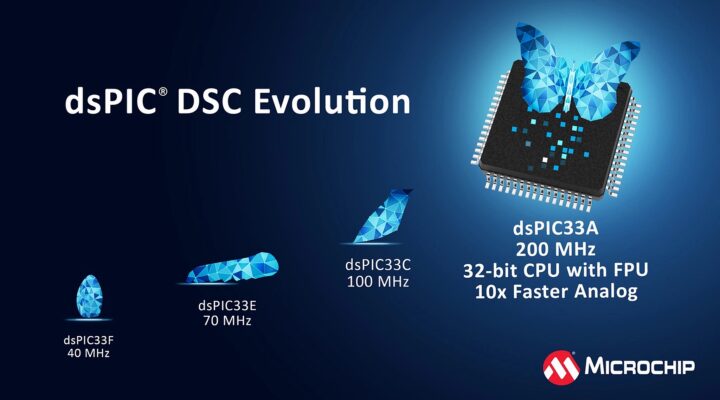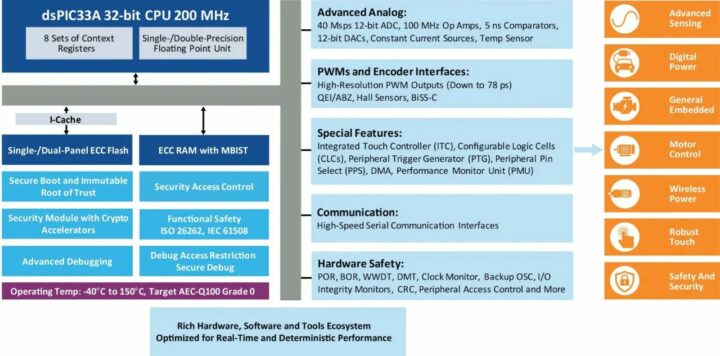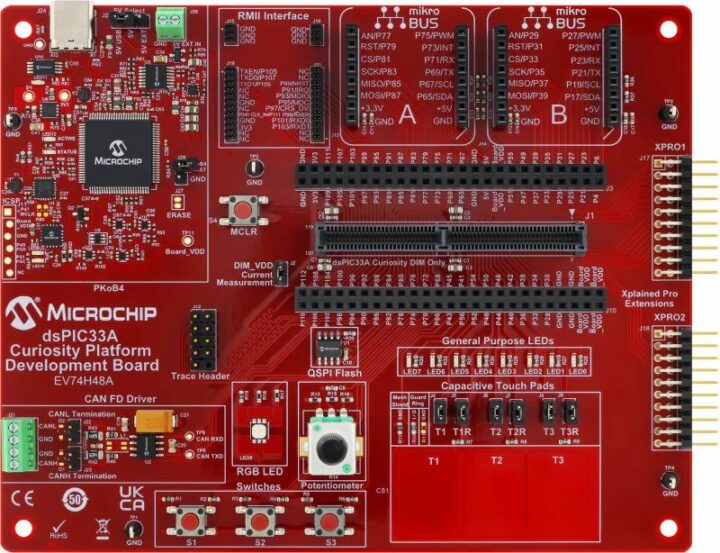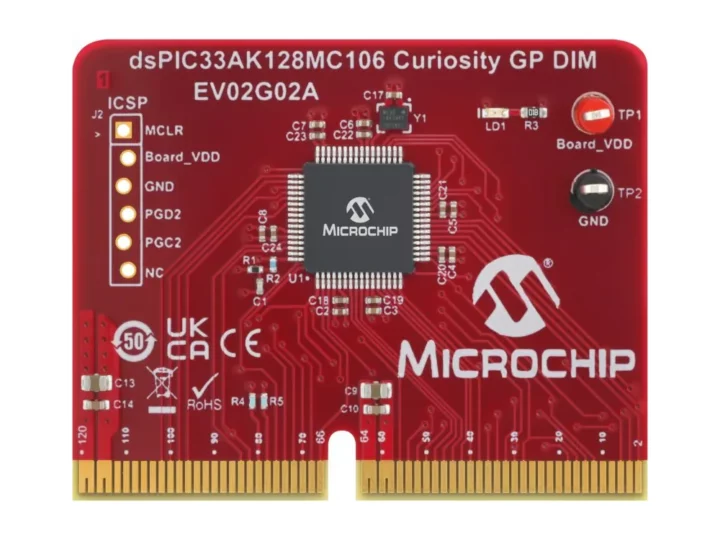Top digital signal controller (DSC) vendor, Microchip Technology Inc., has launched the dsPIC33A series as the newest addition to its portfolio of high-performance DSCs. These digital signal controllers combine the capabilities of a digital signal processor (DSP) with the extensive peripherals of a microcontroller (MCU).

The dsPIC33A series is built around a 32-bit architecture and operates at 200MHz – currently the highest clock speed for a dsPIC. The core includes a double-precision floating-point unit (DP FPU) and a DSP instruction set for numerically intensive operations in closed-loop control algorithms. The dsPIC33A architecture offers high-performance, high-precision real-time control and signal processing in various applications.

The family of DSCs launching the dsPIC33A series, dsPIC33AK128MC1xx, features up to 128KB of flash memory, and an extensive set of built-in peripherals. It comes in different packages, including SSOP, VQFN, and TQFP, with pin counts ranging from 28 to 64 and sizes starting as small as 4 x 4mm. Later dsPIC33A families are to come with more memory, peripherals, and pins.
The dsPIC33A family is bound for applications that require efficient motor control in fans, pumps, and compressors. They are also well-suited for managing digital power conversion in AI servers and electric vehicles and can facilitate sensor interfacing for industrial and automotive applications. It can used in products similar to the SaraKIT carrier board which incorporates a dsPIC33 chip and a Raspberry Pi CM4.
Microchip Technology dsPIC33A DSCs specifications:
- Processing – 32-bit CPU @ 200MHz clock speed; dual 72-bit accumulators supporting 32-bit and 16-bit fixed-point DSP operations; single and double-precision floating-point Unit (FPU) co-processor
- Memory – 128KB code flash memory, 16KB RAM
- Analog Peripherals – 4x high-speed PWM generators with 8x channels; 2x 12-bit ADC with 40 mega samples per second (Msps) conversion rate; 3x 5ns analog comparators and 3x 100MHz op-amp; 4x 10 μA constant sources and 4x programmable sources
- Advanced Peripherals – 3x 4-wire SPI modules, 2x I2C modules, 4x configurable logic cells; peripheral trigger generator (PTG)
- Safety – ECC Flash, ECC RAM with MBIST (Memory Built-In-Self-Test), IO pin integrity monitors, clock monitoring with backup oscillator, Deadman Timer (DMT), Cyclic Redundancy Check (CRC), Watchdog Timer (WDT)
- Security – Secure boot, Secure debug, Immutable Root of Trust (IRT), Firmware IP Protection, Flash Write Protection
- Qualification – AEC-Q100 REV H; Grade 1: -40°C to +125°C
Hardware and software support for the dsPIC33A family includes the MPLAB XC-DSC compiler, the MPLAB Code Configurator, and a development board — the EV74H48A Curiosity Platform. The development board includes mikroBUS and Xplained Pro interfaces for connecting extension kits, sensors, and Click boards. The devices also come as two separate dual in-line modules (DIM) compatible with motor control, digital power conversion, and general-purpose embedded applications.

Devices in the dsPIC33A family are currently available for less than $1 in high volumes. The EV74H48A Curiosity Platform development board is priced at $98, with possible discounts for bulk orders. Microchip Direct also lists two dsPIC33A DIM modules for $18 each, a PIM module (Processor Plug-In) for $49, and an optional $5,000 package for functional safety, but no dsPIC33A chips. Interested buyers should contact a Microchip sales representative, or authorized distributor for the chip themselves. More information about the new dsPIC33A series can be found on the product page and press release.
Thanks to TLS for the tip.

Tomisin is a writer specializing in hardware product reviews, comparisons, and explainers. He is very passionate about small form factor and single-board computers.
Support CNX Software! Donate via cryptocurrencies, become a Patron on Patreon, or purchase goods on Amazon or Aliexpress





